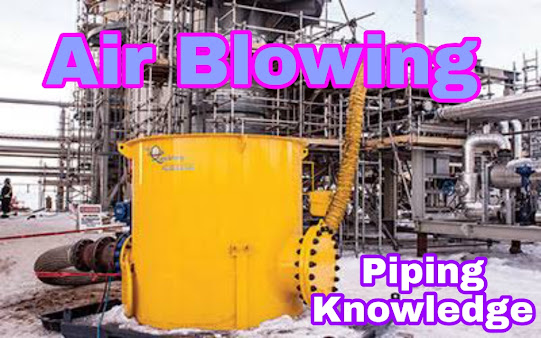Basic Piping Inspection Engineer Responsibility.
Piping Inspection Details.
Piping Construction
Pipework, also known as piping, is a system of pipes that is used to convey fluids. Careful design must ensure the integrity of pipework, with impletion to various considerations and principles.
Pipeline Inspection
In hydrocarbon transmission pipelines, inspection plays a large role in integrity management. For most hydrocarbon transmission (and increasingly for gathering systems also), it is imperative to ensure that the system integrity will not be compromised and to quickly detect any size leak should system integrity fail.
Final Inspection
Final Inspection. It is an inspection in the manufacturing process, and refers to the inspection performed in the final stage of manufacturing process.
INDEX:-
1.Inspection of Fabricated Spool Release, Storage & Preservation.
2. Inspection of Piping Erection.
3. Inspection of Bolting of Flanged Joints.
1.Inspection of Fabricated Spool Release, Storage & Preservation.
Pipe spool Febrication
Pipe spools are fabricated using various types of raw pipes and pipe fittings and they include flanges, elbows, tees, and a lot more. They are usually fabricated offsite. The raw pipes are pre-cut to specific sizes and together with pipe fittings and other components.
Once fabrication, NDE (Non Distractive Examination), and PWHT ( Post weld Heat Treatment) completed, the fabricated spool will be released for painting, by means of a spool release note, the inspector needs to check the following before signing the release note.
1. All welds are identified on the Isometric drawing.
2. All welds are completed and visually accepted.
3. If required post weld heat treatment and hardness check has been completed.
4. All required NDE, (RT, DPT, MPI, UT, PMI, Ferrite count) has been completed and accepted.
5. Required heat numbers have been documented for material traceability.
6. Flange faces are free from damage and are protected.
7. Pipe spools are internally cleaned and end caps are fitted.
8. Dimensions are correct to the Isometric.
9. The root pass on orifice flanges has been ground flush and a report generated.
10. Reinforcing pads around branches have a weep hole which is threaded and a pneumatic leak test has been completed and a report generated.
11. Get all spools have a tag so they can be identified after blasting and painting.
12. Spools released for painting should be identified as such by means of a label affixed to the spool.
Once released spools are stored in a designated lay down area the inspector should monitor the following :
- Spools fabricated from different materials are segregated.
- Spools are stored off the floor on proper sleepers or palates.
- End caps and flange face protectors are in position and not damaged.
- Flange serrated raised faces shall be protected by 5 to 15mm thick plywood disks tied to the flange.
- Flange faces and threads shall be coated with a suitable rust preventive prior to storage.
2. Inspection of Piping Erection.
- Check spools are identified and have a spool release note signed by QC.
- Check flange faces, beveled ends for damage.
- Check for internal cleanliness prior to erection.
- All valves and special items are inspected before installation to ensure that the protective packaging, covers, wrapping and internal preservatives such as silica gel bags are removed.
- Ensure that valves are correct size, type and pressure rating and they are installed at the correct location and orientation.
- Ensure that orientation of valve handles and direction of flow are as shown on the Isometric.
- Welded type valves shall be half opened during PWHT, but not fully opened.
- Flanged control valves, ball valves and other soft seated valves shall be removed before PWHT and line flushing operations. They shall be properly identified, protected and stored until they are installed in the line.
- All Teflon seat valves must be removed before welding.
- All manually operated valves shall be checked to ensure operability prior to erection.
- Check all supports are installed and are the correct type at the correct location.
- Ensure that anchor stoppers are installed according to approved drawings.
- Pipe supports shall be designed and located to effectively sustain the weight and thermal effects of the piping system and to prevent vibration. Location and design of pipe supports shall be as per the relevant drawings.
- No pipe shoe/cradle shall be offset unless specially shown in the drawing.
- Hanger rods shall be installed inclined in a direction opposite to the direction in which the pipe moves during expansion.
- Weld proximity between adjacent welds has to be checked and conformed to the specific requirements of the project.
- Following points shall be checked after installation:
- All restraints have been installed correctly.
- Clearances have been maintained as per support drawing
- Insulation does not restrict thermal expansion
- All temporary tack welds provided during erection have been fully removed
- All welded supports have been fully welded.
- Verify anchor stopper gap.
Correct procedure for bolting of flange joints is extremely important to ensure that there are no leaks during pressure testing and operation of process pipework.
- Correct tools wrenches available.
- Check flange faces for damage and cleanliness.
- Check flange face alignment is within tolerance.
- Gasket is correct type as per BOM and is color coded.
- Correct bolt/nut type as per BOM and no thread damage.
- Lubricant applied to nuts/bolts.
- Numbering of bolt holes on flange, correct sequence.
- Thread engagement between bolts and nuts.
- Check tightness & bolt projection
- Torque wrench is calibrated.
- Check flange faces for damage and cleanliness.
- Check flange face alignment is within tolerance.
- Gasket is correct type as per BOM and is color coded.
- Correct bolt/nut type as per BOM and no thread damage.
- Lubricant applied to nuts/bolts.
- Numbering of bolt holes on flange, correct sequence.












Comments
Post a Comment